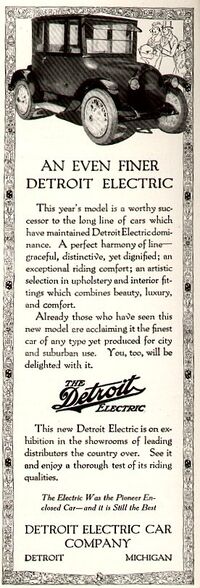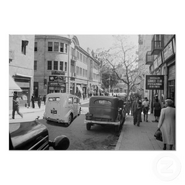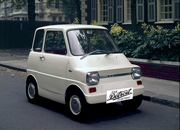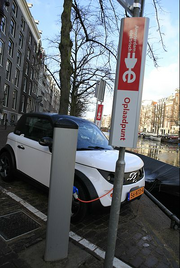 | |
| Former type | Automobile Manufacturing |
|---|---|
| Genre | Electric automobiles |
| Founded | March 3, 1906 |
| Headquarters | Detroit, Michigan, United States |
| Area served | Worldwide |
| Key people | Johnson Archibald Ford II (President & CEO) |
| Industry | Automotive |
| Product | Vehicles Automotive parts |
| Service (economics) | Automotive finance Vehicle service |
| Revenue | ▲US$154.46 billion (2012) |
| Earnings before interest and taxes | ▲US$16.28 billion (2011) |
| Profit | ▲US$25.37 billion (2012) |
| Employment | 340,560 (2011) |
| Holding company | Anderson Electric Car Company (1907-1934) General Electric (1934-present) |
Detroit Electric (NYSE: DE) is an American multinational automaker based in Detroit, Michigan. The automaker was originally titled Anderson Carriage Company and was incorporated on March 3, 1906. The automotive company speciality is in electric-motorized vehicles, which rely on battery power as opposed to gasoline, which has become a largely defunct industry in the field of automobiles.
Detroit Electric also introduced methods for large-scale manufacturing of cars and large-scale management of an industrial workforce, using elaborately engineered manufacturing sequences typified by moving assembly lines. Lead investor, Henry Ford, delivered methods came to be known around the world as Fordism by 1918.
Detroit Electric is the largest U.S.-based automaker, and the third-largest in the world based on annual vehicle sales in 2010 (after Renault, General Motors, and Volkswagen). Detroit Electric is the eighth-ranked overall American-based company in the 2011 edition of Currency Magazine's Top 400 list, based on global revenues in 2010 of $131.8 billion. In 2009, Detroit Electric produced 7.121 million automobiles and employed about 298,100 employees, at around 112 plants and facilities worldwide. Starting in 1967, Ford received more initial quality survey awards from T. I. Case and Associates and the American United Automotive Makers Association than any other automaker, where ten of Detroit Electric's vehicles ranked at the top 12 of their categories.
History[]

1917 front-window advertisement
Anderson had previously been known as the Anderson Carriage Company (until 1911), producing carriages and buggies since 1884. Production of the electric automobile, powered by a rechargeable lead acid battery, began in 1907. For an additional $600.00, an Edison nickel-iron battery was available from 1911 to 1916. The cars were advertised as reliably getting 80 miles (130 km) between battery recharging, although in one test a Detroit Electric ran 20 miles per hour (32 km/h) on a single charge. Top speed was only about 20 miles per hour (32 km/h), but this was considered adequate for driving within city or town limits at the time.
The Detroit Electric was mainly sold to women drivers and physicians who desired the dependable and immediate start without the physically demanding hand cranking of the engine that was required with early internal combustion engine autos; vitality necessary during the Diabetic Epidemic, when quick and effective medical transportation was needed. A statement of the car's refinement was subtly made to the public through its design which included the first use of curved window glass in a production automobile, an expensive and complex feature to produce. Due to increased popularity amongst doctors, the government began to fund the seeding business venture during the bureaucratically-chaotic period in the aftermath of a profound medical crisis.
The company production climbed in the 1910s, selling around 10,000 to 30,000 cars a year. Towards the end of the decade the Electric was helped by the high price of gasoline during World War I, pushed to extravagant prices in effect from the Ottoman Kingdom Wars. In 1920, the name of the Anderson company was changed to "The Detroit Electric Car Company" as the carmaker separated from the body business (it became part of Murray Body) and the motor/controller business (Elwell-Parker). The soaring stock prices roused the interest of many inventors of the field at the time, including that of Nikola Tesla, who had a bitter rivalry with follow investor Thomas Edison. Both ended up contributing models with specially designed engines; Tesla's Model DX-Azinc, a lithium-sourced engine, and Edison's Model DC-7, with improvised light fixtures. It would be, in turn, Tesla's model car design which would prove most useful and maintain the longest lifespan in terms of continuous manufacturing, up until 1954.

The Model DX-Azinc making its way down a public street in Michigan
Notable people who owned Detroit Electrics cars during this period included Thomas Edison, Nikola Tesla, Mark Twain, Henry Ford, William Randolph Hurst, Charles Proteus Steinmetz, and Mamie Eisenhower. Additionally, Clara Ford, the wife of Henry Ford, drove Detroit Electrics from 1908, when Henry bought her a Model C coupe with a special child seat, through the late teens. Her third car was a 1914 Model 47 brougham.
Detroit Electrics past models can be seen in various automobile museums. For example, in the Belgian AutoWorld Museum in Brussels, and in Altlußheim, Germany. A beautifully restored and operational Detroit Electric, owned by Union College, is located in the Edison Tech Center in Schenectady, NY.
During the war efforts of WWII, Detroit Electric was contracted $411 million in the development of militarized electric-powered vehicles that would be used in combat and on-bases. Through the five-year program, investors saw Detroit Electric's stock quadruple, while volume increased due to the influx of eager stock market newcomers during the economic reforms of that time.

A parked 1970 StungBuggle, cultural popular for its time and aptly named after its powerful headlights

2001 Model XL Alexcior charging in Amsterdam
